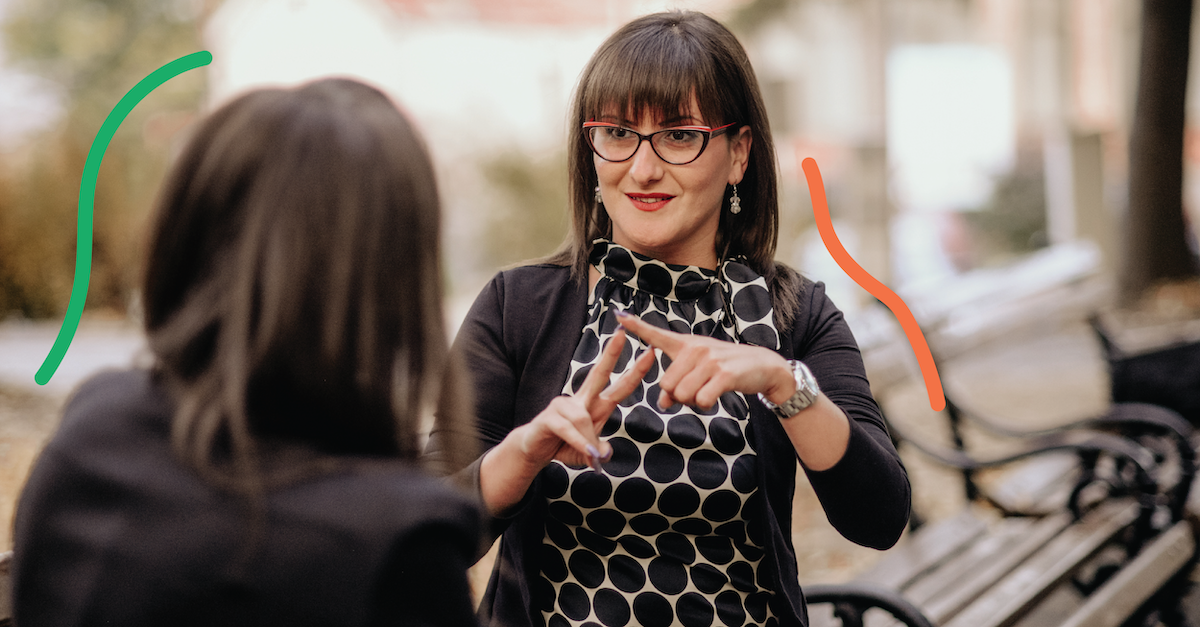Stay up to date.
Stay connected with tips, resources & stories on language access.

When you think of limited-English proficient (LEP) individuals, your mind might immediately go to those who speak another spoken language, like Spanish or Mandarin. However, the term LEP encompasses much more.
According to the legal definition, anyone who does not speak English as a first language and has limited-English fluency qualifies as an LEP individual. Many people in the Deaf and hard of hearing (HoH) communities fall into this category, and according to the Americans with Disabilities Act (ADA), they must be offered an effective means of communication at hospitals.
However, these individuals do not always receive such support. People often make two assumptions: Sign language is just a visual form of English, and most Deaf or HoH patients don't need language services aside from lip-reading and written documents.
Both of these statements are untrue. Not only that, but these assumptions can prevent patients from getting the language services they need, jeopardizing their health.
Perhaps the most critical thing to understand is that American Sign Language (ASL) is not simply a visual representation of English. It is a language all its own, complete with intricate syntax, grammar patterns, and slang.
As such, people who learned ASL from birth are not native English speakers, even if they have learned to read, write, and speak English. Deaf individuals who use English may also have limited fluency, just like any other non-native English speaker.
However, the issue is that many people are unaware that ASL is uniquely its own language just like Tagalog or German.
For example, the Signing is Language Act was introduced to Congress in 2019, pushing for recognition of ASL as a foreign language so students can receive the appropriate support as English language learners. The act is still in the introduction phase after almost three years. Likewise, less than 200 colleges and universities (of the over 4,300 U.S. institutions) accept ASL as a fulfillment of foreign language studies.
As a result, people in the Deaf community are often expected to automatically adapt to a hearing and English-speaking world without receiving appropriate accommodations. This becomes a significant problem in healthcare, where clear communication is the foundation of proper care.
Even people who don't use ASL but still belong to the Deaf or HoH communities face the same unrealistic expectations to adapt to everyone else's communication methods.
Some Deaf and HoH individuals have learned to read lips, and others can hold a spoken conversation. However, that doesn't mean they understand everything being said, nor that they can fully express themselves using those forms of communication.
Although the ADA includes lip-reading as an option for effective communication with some Deaf and HoH patients, research proves otherwise. A 2015 article in the Journal of Health Communication states that Deaf patients understand less than 30% of spoken English when lip-reading.
This makes sense if you think of all the bad lip-reading videos made over the years. Even with great articulation, people can still easily misinterpret what someone else is saying.
And a simple misunderstanding in the healthcare industry can be detrimental.
That's where medically qualified interpreters come in. They help reduce the possibility of misunderstandings and remove the pressure of expecting patients to lip-read while seeking medical care.
Another issue is that healthcare providers may rely on written documents to share information. While this might work well for billing information or an appointment reminder, it's not a sustainable communication approach during an entire medical visit.
If a medical professional has no access to ASL interpreters, they may ask patients to write down their symptoms. Or, they might write everything down for the patient to read.
Both of these forms of relying on written English can actually be just as ineffective as lip-reading. According to the Journal of Health Communication, almost half of Deaf patients have low health literacy, largely because they use a visual language, not a written one. One patient even shared that they could not understand what a medical professional wrote down for them because of their limited writing skills.
Instead of relying on written English, medical professionals can make healthcare accessible with ASL interpreters. These trained professionals help provide an accurate and unbiased interpretation in a language that the patient feels most comfortable using.
Deaf and HoH patients deserve patient-centered care that enables them to fully express their needs and concerns; language services in healthcare helps. Through onsite and on-demand video remote interpreting, interpreters can ensure Deaf and HoH patients are able to understand their care plans, reducing the likelihood of readmission..
But the benefits of language services don't stop there.
Having access to an interpreter can transform a patient's health. A 2022 publication in The European Journal of Public Health explains that members of the Deaf and hard of hearing communities typically have poorer health than the hearing population.
Numerous factors contribute to this. Deaf and HoH patients may avoid seeking medical help because they lack confidence in their health literacy or communication abilities. They may also misunderstand diagnoses, treatment plans, and medication.
By providing clear, real-time communication, language services can help avoid or alleviate these situations.
The quality of healthcare should never depend on what language the patient does — or does not — speak. Make sure your patients receive top-notch care with the help of qualified medical interpreters. Use GLOBO to connect with ASL interpreters when you need them. Schedule a demo today and see how our platform revolutionizes language services.